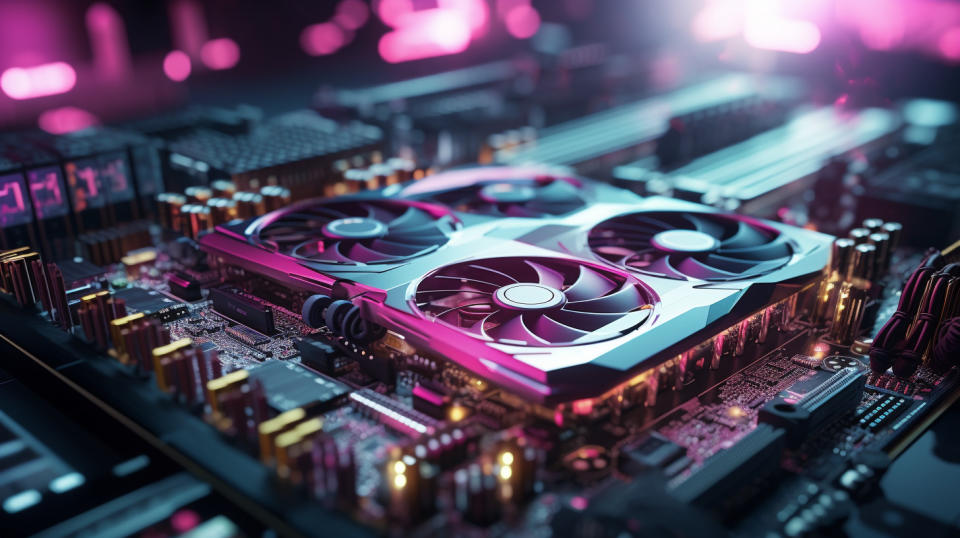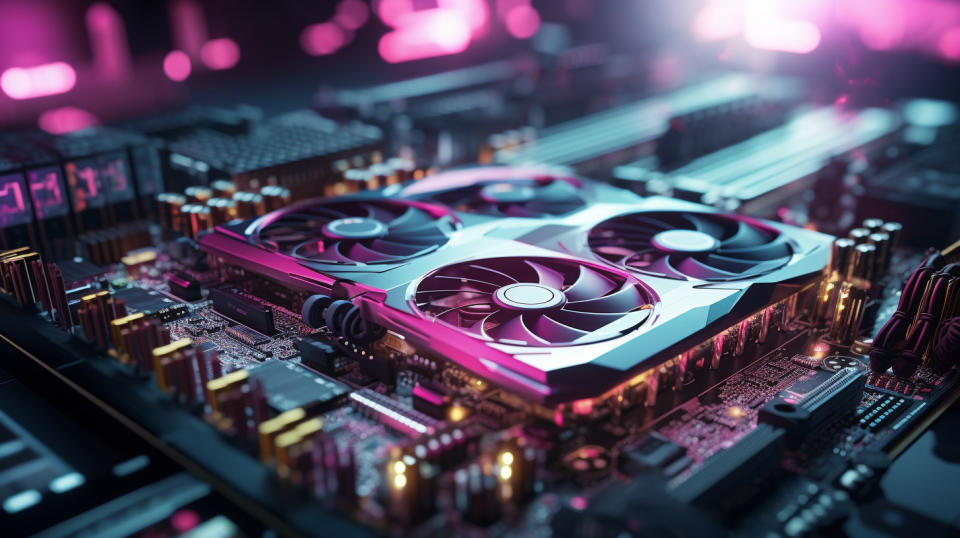We recently compiled a list of the 15 Best Data Center Stocks To Buy According to Jefferies, Citi and Wall Street Analysts. In this article, we are going to take a look at where NVIDIA Corporation (NASDAQ:NVDA) stands against the other data center stocks.
The boom in the interest surrounding artificial intelligence has not only affected semiconductor stocks, even though they’re the biggest beneficiaries. While the chips that these companies make are indispensable for running AI workloads, they have to be housed somewhere, and this is where data centers come into play.
In fact, for the data center space, AI has only accelerated the growing demand this industry is seeing. Prior to AI GPUs and accelerators, enterprise computing chips made by the same companies that are now making AI chips were seeing hefty demand. This demand led to gaming GPU companies effectively being transformed into enterprise computing firms, with sectors such as the SaaS and cloud computing industries relying on these products. For some SaaS stocks, you should check out 10 Best SaaS Stocks To Buy Now.
This pre AI demand for data centers is visible in statistics too. Data from Jefferies shows that the demand growth for data centers has jumped by between 10% to 20% for the last 15 years, or before AI GPUs hit the market. As expected, AI has accelerated this demand, with the demand for data center space outpacing 30% in most markets for the past two years. This growth in real estate requirements also means that while the computing industry might be able to scale up by providing products like networking gear and cables, tertiary industries like energy generation will take some time to catch up.
If you’re a believer in AI, then the optimistic line of thought would suggest that these tertiary firms will only grow in the future as they scale up their operations to meet the growth in AI data centers. After all, data from Goldman shows that a query made to ChatGPT consumes ten times as much energy as a Google search query – understandable since ChatGPT is parsing through data and drawing insights to generate a response. By 2030, AI is expected to grow data center power demand by as much as 160%, as data centers potentially account for 4% of global energy consumption and Europe in particular needs more than $1 trillion to power its AI grid.
Naturally, since the US is responsible for ushering in AI, AI energy consumption in America is higher than that in other countries. According to the Boston Consulting Group, by 2030, AI power consumption will account for 16% of all of America’s energy use. It is expected to grow by 15% to 20% annually and touch as much as 130 GW, or the amount of electricity that’s used by 100 million homes. AI chip companies are also aware of these trends, with the latest AI chips promising to improve energy efficiency by 25x. Improving AI performance at the semiconductor level is important especially since some areas where data centers are growing are being forced to turn to coal power to reduce the power gap.
Nowhere is this clearer than in Northern Virginia, where data centers process 70% of the world’s internet traffic. With more than 300 data centers that churn out more than $700 million in taxes annually, the region’s computing centers are expected to require a whopping 11,000 megawatts of electricity annually by 2035 according to estimates by the local regulator. This demand has also spurred a $5.2 billion effort to lay down new transmission lines and keep coal power plants open for longer than initially planned.
Not only does AI need real estate and power, but it also needs water. Since energy can neither be created nor destroyed, all the megawatts of power that AI chips need have to go somewhere. For the chips, it is dissipated in the form of heat, and cooling this requires copious amounts of water. Estimates show that not only does training GPT-3 evaporate a whopping 700,000 liters of drinkable water, but global AI demand by 2027 could end up using anywhere between 4.2 billion to 6.6 billion cubic meters of water.
Coming back to real estate, it might be the easiest way for the AI savvy investor to cash in on the world’s thirst for computing. Citi believes that the “development and construction of hyper-scale data center capacity will grow meaningfully over the next 7 years,” as global industrial giants expand into the data center space. Not only are industrial firms actually converting their warehouses into data centers, but Citi adds that the associated power demand for these computing facilities will grow between the mid teens annually until 2030.
So, as these Wall Street firms lay out a maze of industries that will profit from AI, we decided to look at the top data center stocks to buy according to analysts.
Our Methodology
To make our list of the top data center stocks to buy, we ranked the US listed holdings of Global X’s data center ETF and the stocks chosen by Jefferies and Citi by the average analyst share price target percentage upside and picked out the stocks with the highest upside.
For these stocks, we also mentioned the number of hedge funds that had bought the shares in Q1 2024. Why are we interested in the stocks that hedge funds pile into? The reason is simple: our research has shown that we can outperform the market by imitating the top stock picks of the best hedge funds. Our quarterly newsletter’s strategy selects 14 small-cap and large-cap stocks every quarter and has returned 275% since May 2014, beating its benchmark by 150 percentage points (see more details here).

A close-up of a colorful high-end graphics card being plugged in to a gaming computer.
NVIDIA Corporation (NASDAQ:NVDA)
Average Analyst Share Price Target Upside: 25%
Average Analyst Share Price Target: $125.43
Number of Hedge Fund Investors in Q1 2024: 186
NVIDIA Corporation (NASDAQ:NVDA) is the hottest stock in the AI sector right now. However, the fact that its shares are up by 135% over the past twelve months means that further upside is limited. NVIDIA Corporation (NASDAQ:NVDA) dominates the data center industry due to its plethora of GPUs and bundles. Not only does it sell standalone GPUs, but it also sells them in clusters that are tailor made for AI use. The GPUs’ tight integration with their CUDA software means that NVIDIA Corporation (NASDAQ:NVDA) customers enjoy a significant advantage when it comes to squeezing the most performance from the products. However, the very fact that it sits at the top of the AI supply chain leaves NVIDIA vulnerable to competitors and customers designing their own chips and regulators deciding that it has abused its competitive power. However, analysts are certain of robust demand for NVIDIA Corporation (NASDAQ:NVDA)’s products until at least 2025 end.
Aristotle Atlantic Partners mentioned NVIDIA Corporation (NASDAQ:NVDA) in its Q2 2024 investor letter. Here is what the firm said:
“Nvidia contributed to portfolio performance in the second quarter as investors continued to view positively the new product roadmap for the rest of the year. The company sees accelerating demand for its GPU semiconductors from hyperscalers and enterprises. Nvidia’s GPU semiconductors continue to be the industry-leading building blocks of the accelerated computing data center architecture to drive AI compute and applications.”
Overall NVDA ranks 13th on our list of the best data center stocks to buy. While we acknowledge the potential of NVDA as an investment, our conviction lies in the belief that some AI stocks hold greater promise for delivering higher returns and doing so within a shorter timeframe. If you are looking for an AI stock that is more promising than NVDA but that trades at less than 5 times its earnings, check out our report about the cheapest AI stock.
READ NEXT: $30 Trillion Opportunity: 15 Best Humanoid Robot Stocks to Buy According to Morgan Stanley and Jim Cramer Says NVIDIA ‘Has Become A Wasteland’.
Disclosure: None. This article is originally published at Insider Monkey.






